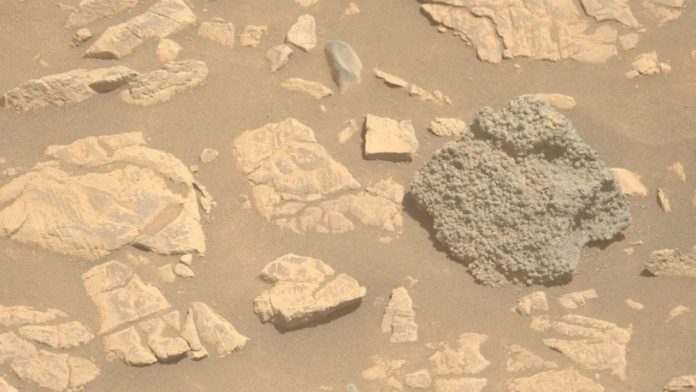At the beginning of March, the Perseverance rover made an amazing opening on the Red Planet - it locked a stone consisting of hundreds of tiny spheres that resemble spider eggs. NASA scientists cannot explain accurately how this unusual structure was formed and how it was in its present place.
The strange stone, called "Bay of St. Paul," was spotted on March 11 on the slopes of the Wind-Heisel Hill in the Crater of Jezer. It is significantly different from the surrounding rocks and looks as if it consists of miniature spherical formations. Scientists have come to the conclusion that this object is "floating" - that is, it is not in the place of its original formation. It creates an additional secret: something made the stone move, but what exactly?
NASA has several hypotheses for the formation and movement of this structure: a meteor shot - one of the options is that the stone could appear after the meteorite falls. The high temperature caused by a blow could melt the Martian breed, and then the material again hardened in the form of spherical pellets. If this theory is true, then the stone is probably formed far from the place where it was discovered. Moving from the hill-researchers also suggest that the stone could simply slip from the darker layers of the Wind Hill. The study of these layers in the future can help to find out the nature of this phenomenon. Traces of ancient water or volcanic activity - if the slopes of the hill have a similar composition to the stone of the "Gulf of St. Paul", it can indicate ancient volcanic activity, the effects of a meteorite impact, or even the presence of groundwater in the past.
Similar structures give scientists to understand how Mars has changed over millions of years. Geological processes that have formed and moved the stone can also reveal the interaction between water, stones and climatic changes on the planet. In particular, if there was water on the Wind-Hizel Hill, then some samples collected by the Perseverance rover may contain traces of microbial life. This question can be answered in the 2030s, when Mars Sample Return's mission will return these specimens to the Earth for careful analysis.
The discovery of Persevertance continues to bring us closer to the unraveling of Mars, and who knows, perhaps, such strange findings will help us find evidence of a long -standing life on the Red Planet.


